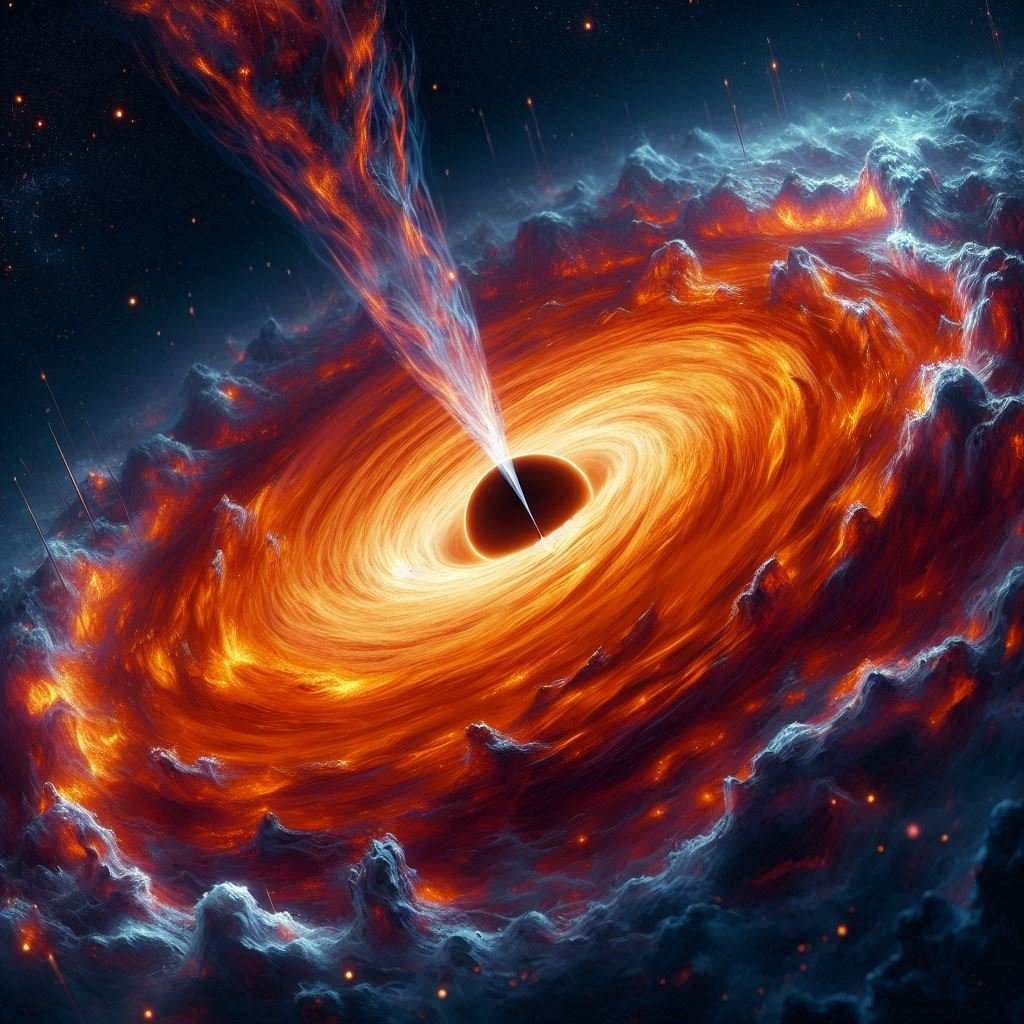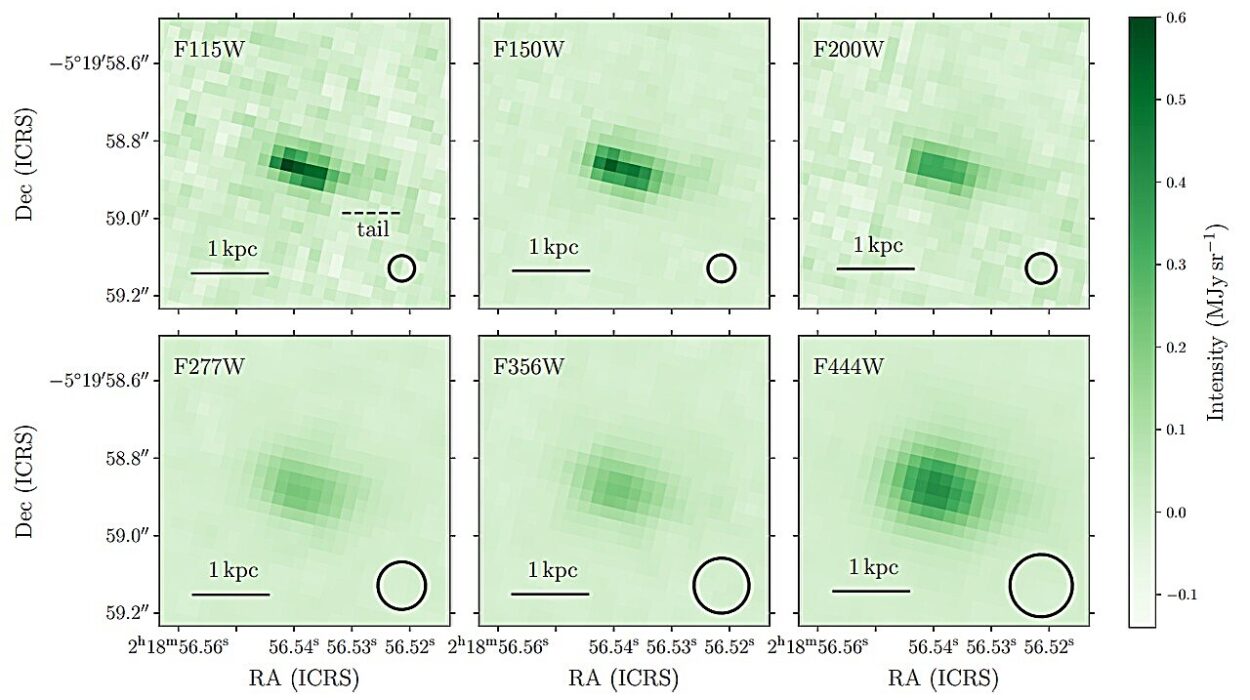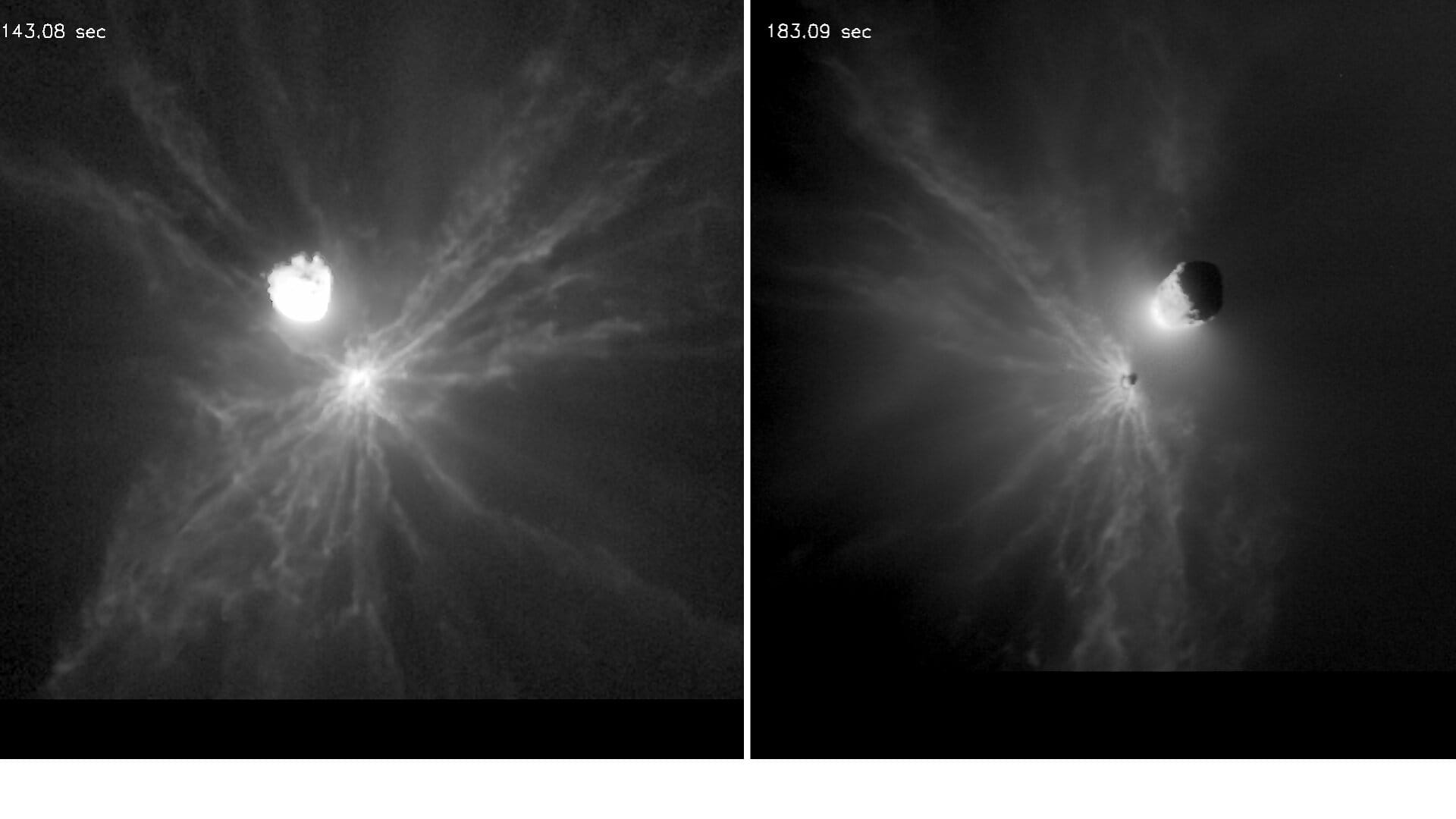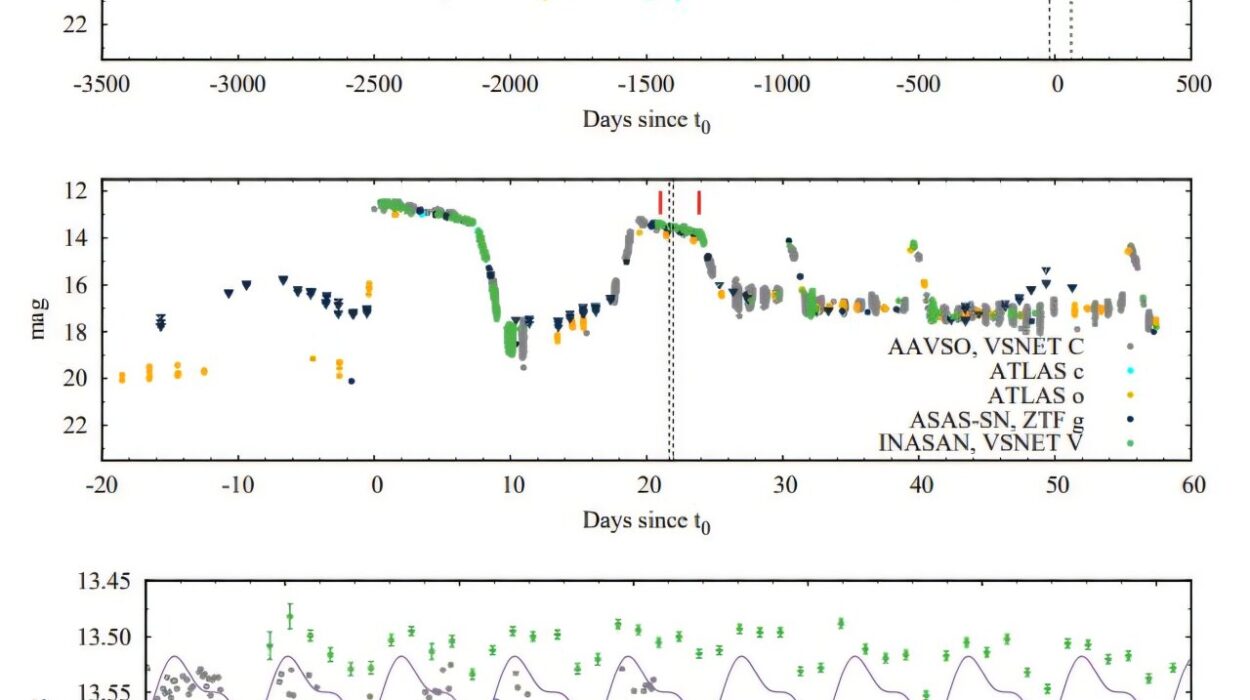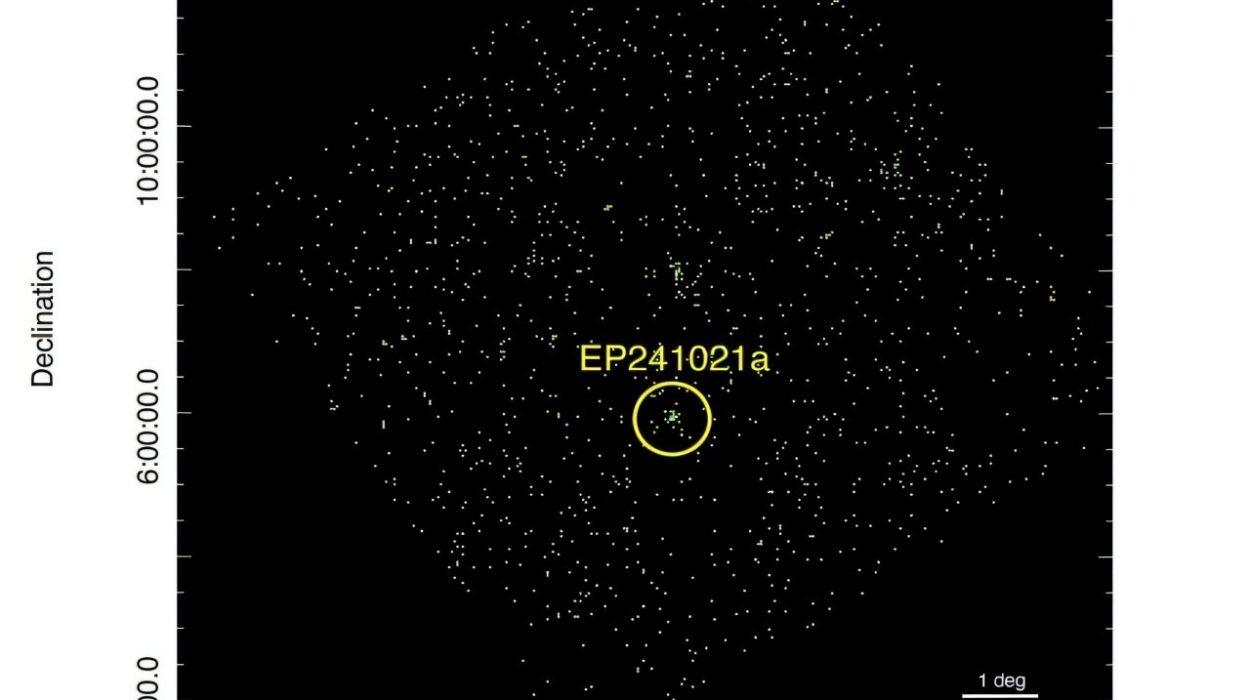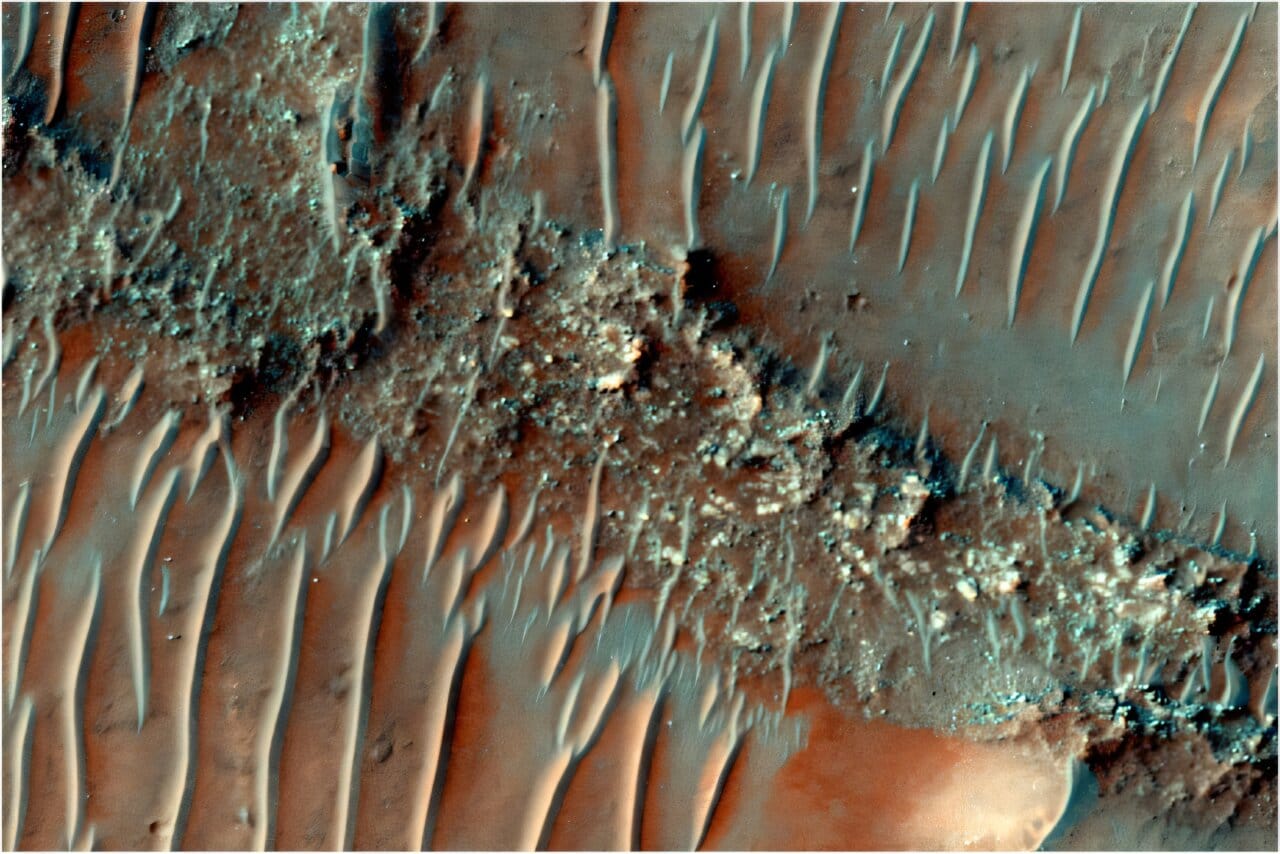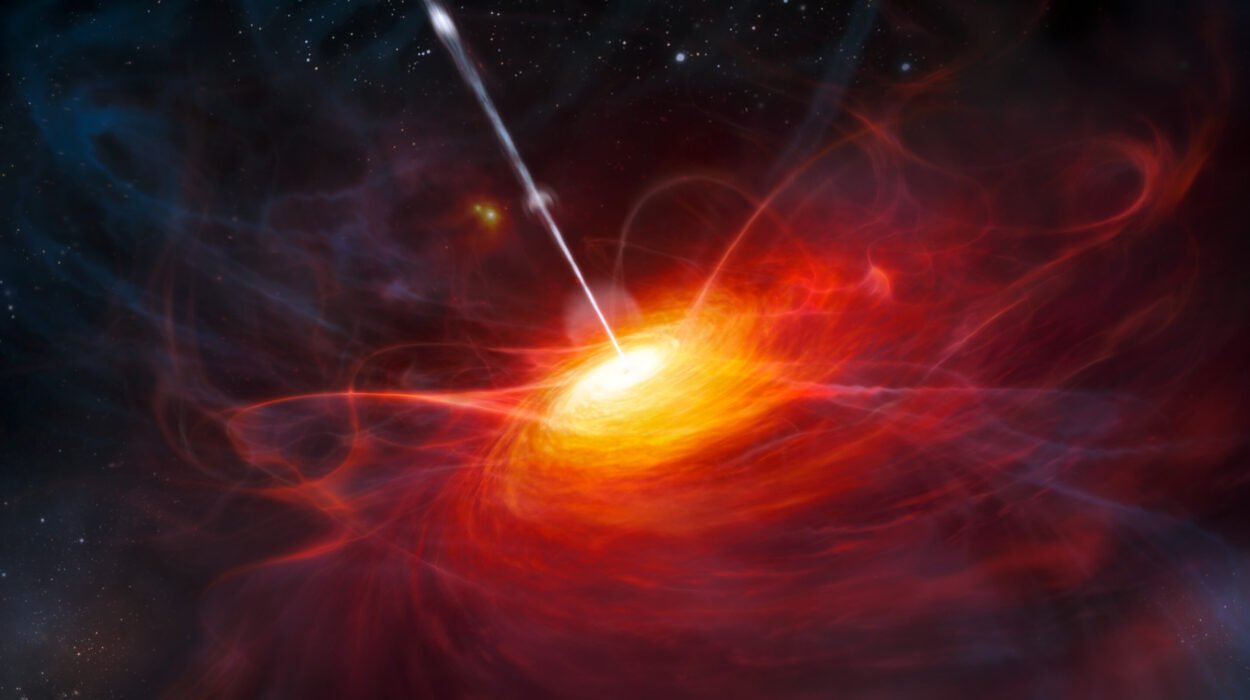For the first time, scientists have detected radio signals from the hot molecular gas surrounding a supermassive black hole that existed 12.9 billion years ago. This groundbreaking discovery, published in Nature Astronomy, provides an unprecedented glimpse into the extreme environment near a black hole from the universe’s infancy.
Led by Professor Ken-ichi Tadaki from Hokkai-Gakuen University, an international team of researchers—including experts from The Australian National University (ANU)—used ultra-high-resolution observations to study the turbulent surroundings of a black hole more than a billion times the mass of the Sun. Their findings shed new light on how these cosmic giants form, grow, and influence their host galaxies, even in the dust-shrouded depths of space.
Peering Through the Cosmic Fog
Supermassive black holes are some of the most enigmatic objects in the universe. While they are typically surrounded by enormous amounts of gas and dust, their immense gravitational pull forces this material into an accretion disk, where it spirals inward at incredible speeds. This process generates extreme amounts of energy, making quasars—the luminous beacons powered by black holes—among the brightest objects in the cosmos.
Despite their brilliance, studying the immediate vicinity of these black holes has proven immensely challenging, particularly in the early universe, when thick clouds of gas and dust obscured much of the light. However, this latest discovery offers a new way to peer through the cosmic fog and reveal the secrets hidden within.
Study co-author Dr. Takafumi Tsukui from ANU emphasized the significance of the finding.
“The findings help us understand how black holes grow from tiny seeds in the early universe to supermassive black holes, and the challenges posed by dust and gas that can obscure them,” he said. “Many supermassive black holes may lie concealed within dusty regions of the early universe, simply undetected.”
The study suggests that numerous black holes from the early universe could be hidden behind dust, escaping detection through traditional observational methods. However, by focusing on specific radio signals, scientists can now unveil these elusive cosmic giants.
ALMA’s High-Resolution Observations: A Breakthrough in Black Hole Research
To achieve this historic discovery, the research team harnessed the power of the Atacama Large Millimeter/submillimeter Array (ALMA), one of the most advanced radio telescopes in the world. Situated high in Chile’s Atacama Desert, ALMA operates at millimeter and submillimeter wavelengths, allowing it to penetrate dense cosmic dust and capture signals that optical telescopes would miss.
Using ALMA’s ultra-high-resolution capabilities, the scientists studied radio emissions from carbon monoxide molecules in higher energy states. These emissions provided an unparalleled look at the hot, turbulent gas swirling within a few hundred light-years of the black hole—closer than ever observed at such an early time in cosmic history.
Dr. Tsukui explained the significance of the findings:
“We discovered that intense X-ray radiation emitted by the material spiraling around the black hole, along with strong winds and shock waves, heat the gas to energy states far higher than what’s typically seen in normal galactic environments, where the main source of energy comes from the ultraviolet radiation from stars.”
This means that the gas surrounding the black hole is being heated to extreme temperatures, not by star formation, but by the powerful forces unleashed by the black hole itself. The discovery marks the first time scientists have been able to directly observe and quantify these heating mechanisms in such a distant black hole.
What This Means for Black Hole Evolution
Supermassive black holes play a crucial role in shaping galaxies, influencing star formation, and regulating cosmic ecosystems. However, their origins remain one of the greatest unsolved mysteries in astrophysics.
Did these black holes form from the collapse of the first massive stars? Or did they grow rapidly from smaller black hole seeds, merging and feeding on surrounding gas at extraordinary rates?
This new research provides critical clues. By studying the hot gas conditions in such an ancient black hole, scientists can infer how these cosmic giants evolved in the early universe. The study also highlights how black holes interact with their surroundings, influencing the distribution of gas and the formation of stars in their host galaxies.
By applying similar observational techniques to other early-universe black holes, researchers hope to develop a more comprehensive understanding of their growth patterns and the role they played in shaping the cosmos.
Dr. Tsukui emphasized the broader impact of the findings:
“As the radio waves observed by ALMA are not easily absorbed by dust, our technique becomes a powerful tool for discovering hidden supermassive black holes.”
This means that previously unseen black holes lurking behind dense cosmic dust may soon be uncovered, revolutionizing our understanding of how these objects shaped the early universe.
A New Era of Discovery
This discovery is just the beginning. With next-generation telescopes such as the James Webb Space Telescope (JWST) and upcoming advancements in radio astronomy, scientists will soon be able to probe even deeper into the universe’s past.
By combining high-resolution radio observations with infrared and X-ray data, researchers will be able to map out the growth of supermassive black holes, uncover the physical processes driving their evolution, and perhaps even answer one of the most fundamental questions in astrophysics: how did these behemoths come to exist so early in the universe’s history?
For now, the detection of radio signals from this ancient supermassive black hole serves as a reminder of how much remains hidden in the depths of space—and how far we have come in our quest to unveil the mysteries of the cosmos.
The journey to understanding the origins of black holes is far from over, but with each new discovery, we move one step closer to unlocking the secrets of the universe’s most powerful forces.
Reference: K. Tadaki et al, Warm gas in the vicinity of a supermassive black hole 13 billion years ago, Nature Astronomy (2025). DOI: 10.1038/s41550-025-02505-x
